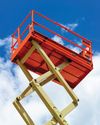One-third of the way into 2019, the U.S. stock market looked more resilient than ever. The bull had snapped back from a devastating correction like a bovine half its age.

Assuaging worries of a looming recession, the economy grew at a robust 3.2% in the first quarter. Instead of earnings dipping into negative territory, as analysts had expected, corporate America ended the first quarter slightly in the black. // Perhaps most important, the Federal Reserve Board pivoted from telegraphing as many as three rate hikes in 2019 to zero rate hikes. Stocks hit a new high on April 30, delivering an early 2019 return of 18.3%, including dividends—nearly two years’ worth of the long-term average gain for stocks in just four months. As strategist David Kelly of JP Morgan Funds noted, in the vernacular of NASA astronauts, all systems were “go.”
Then President Trump tweeted about trade. To steal Kelly’s metaphor, he might as well have tweeted, “Houston, we have a problem.” Stock prices sank 4.5% in six trading days as the trade war with China escalated. Stocks have been volatile since, and the downdraft served as a swift reminder that substantial risks are building in this aged bull market and in an economic expansion that in July becomes the longest one ever.
In our January issue, we said that Standard & Poor’s 500-stock index could reach 2950 to 3000 in 2019, with no guarantees that the highs would come at year-end. We got to 2946 on April 30. Although we’re not ruling out violent swings up or down, we now think that the year will end with the S&P 500 somewhere closer to 2850, as earnings continue to increase, but modestly, and investors express a smaller appetite for risk by keeping price-earnings ratios in check. That would put the Dow Jones industrial average between roughly 26,000 and 27,000—let’s say a little bit over 26,500. If we’re correct, the S&P 500 would end the calendar year with a price gain of about 14%, but not far from its recent close at about 2860. (Prices, returns and other data are as of May 17, unless otherwise noted.)
Denne historien er fra July 2019-utgaven av Kiplinger's Personal Finance.
Start din 7-dagers gratis prøveperiode på Magzter GOLD for å få tilgang til tusenvis av utvalgte premiumhistorier og 9000+ magasiner og aviser.
Allerede abonnent ? Logg på
Denne historien er fra July 2019-utgaven av Kiplinger's Personal Finance.
Start din 7-dagers gratis prøveperiode på Magzter GOLD for å få tilgang til tusenvis av utvalgte premiumhistorier og 9000+ magasiner og aviser.
Allerede abonnent? Logg på

HOW INFLATION ADJUSTMENTS WILL AFFECT YOUR TAXES
We looked at IRS rules for 2025 on everything from tax brackets to how much you can save in retirement accounts.

GUARD AGAINST IDENTITY THEFT IN THE NEW YEAR
Scammers are getting better at impersonating legitimate businesses.

SHOULD YOU BUY PET HEALTH INSURANCE?
You can fend off big veterinary bills with a policy that covers your furry companion.

THE LOWDOWN ON BUYING A VACATION HOME
If you return to a beloved destination again and again, purchasing a home there may be a smart move-but don't overlook the costs and effort that go into it.

HOW COUPLES CAN MANAGE DIFFERING RETIREMENT TIME LINES
Staggered retirement is increasingly common, but it can create financial and emotional challenges.

AVOID THESE CREDIT MISSTEPS
KIPLINGER ADVISOR COLLECTIVE

WHAT YOU NEED TO KNOW ABOUT WORKING FOR YOURSELF
Whether you're looking for a side gig or planning to start your own business, it has never been easier to strike out on your own.

My Top 10 Stock Picks for 2025
SINCE 1993, I have offered an annual list of 10 stocks with the potential to beat the market in the 12 months ahead. My 2024 selections notched the highest return ever: an average of 48.9%. I beat the S&P 500 index by 10.8 percentage points, and every one of my stocks was up-six by more than 30%.

WHAT MAKES AN ETF SUCCESSFUL?
EXCHANGE-traded funds have exploded in popularity, with the industry now reaching the milestone of $10 trillion in assets.

TIPS FROM INSIDERS
When corporate insiders buy or sell, it can offer clues on whether you should do the same.